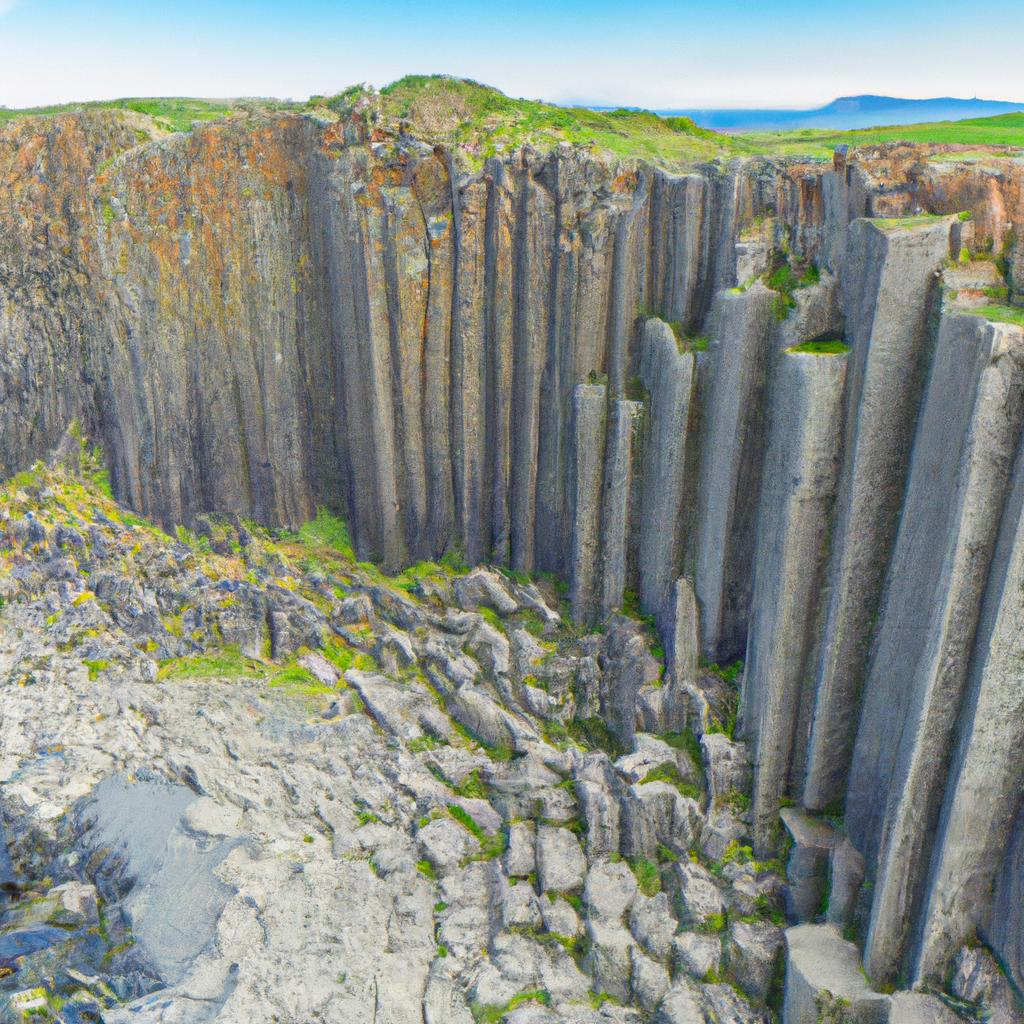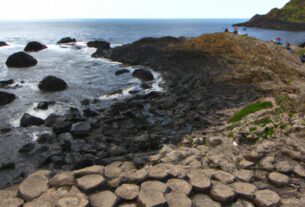Basalt columns are among the most captivating geological phenomena on Earth. These magnificent pillars are formed when molten lava cools and contracts, giving rise to exquisite hexagonal-shaped structures. Each basalt column is a unique marvel, with distinct patterns and textures that have fascinated scientists and tourists alike. In this article, we will delve into the formation, features, locations, applications, and conservation of basalt columns.
The Formation of Basalt Columns
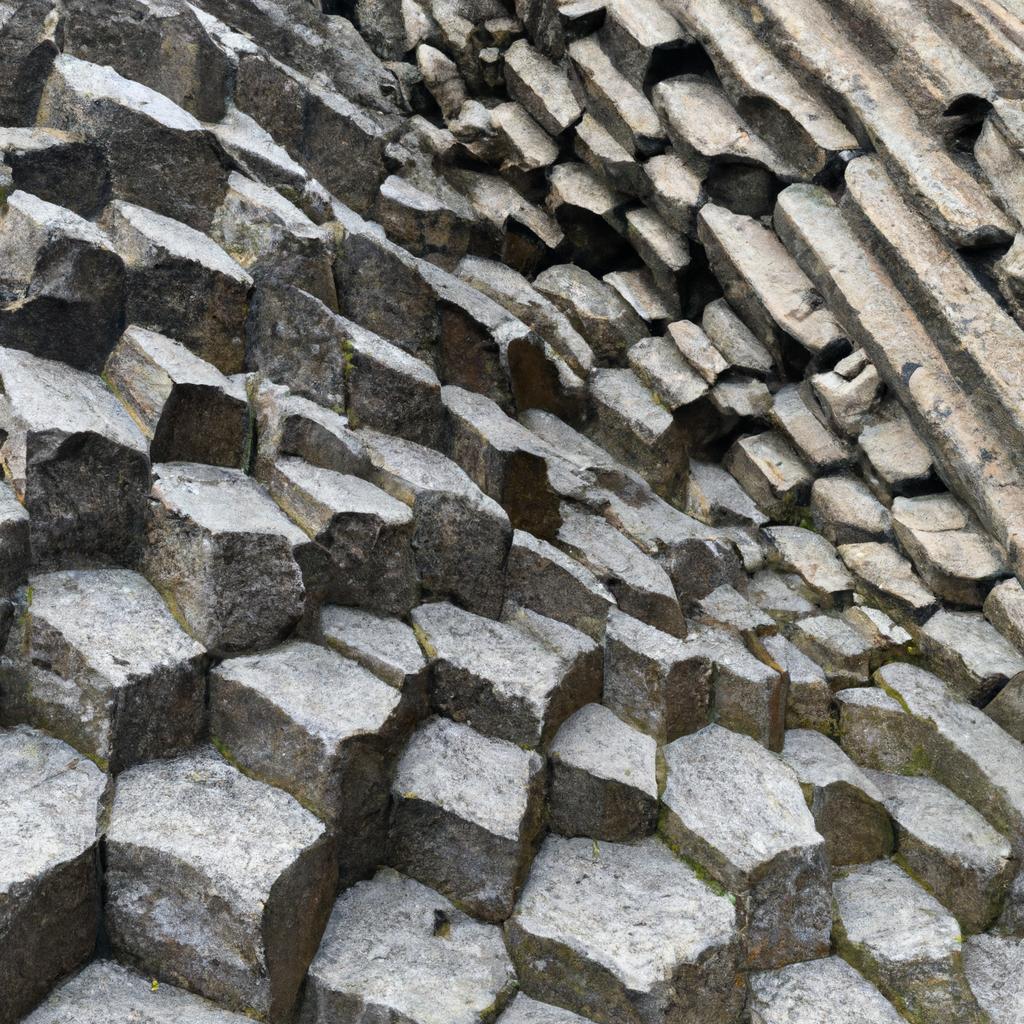
The formation of basalt columns occurs as lava rapidly cools and contracts, resulting in fractures that ultimately shape these remarkable formations. Various factors influence their formation, including lava temperature, cooling rate, and mineral content. Slower cooling processes tend to produce more basalt columns. The process itself is a captivating spectacle, often giving rise to utterly unique and breathtaking geological features. Basalt columns can vary in size, with diameters ranging from a few inches to several feet, and can be found in clusters or as individual pillars. Some columns even reach towering heights of up to 40 feet.
Basalt columns are commonly found in volcanic regions, such as Iceland, Ireland, and the Pacific Northwest of the United States. The Giant’s Causeway in Northern Ireland, with over 40,000 hexagonal columns, stands as one of the most renowned basalt column sites in the world.
The Characteristics of Basalt Columns
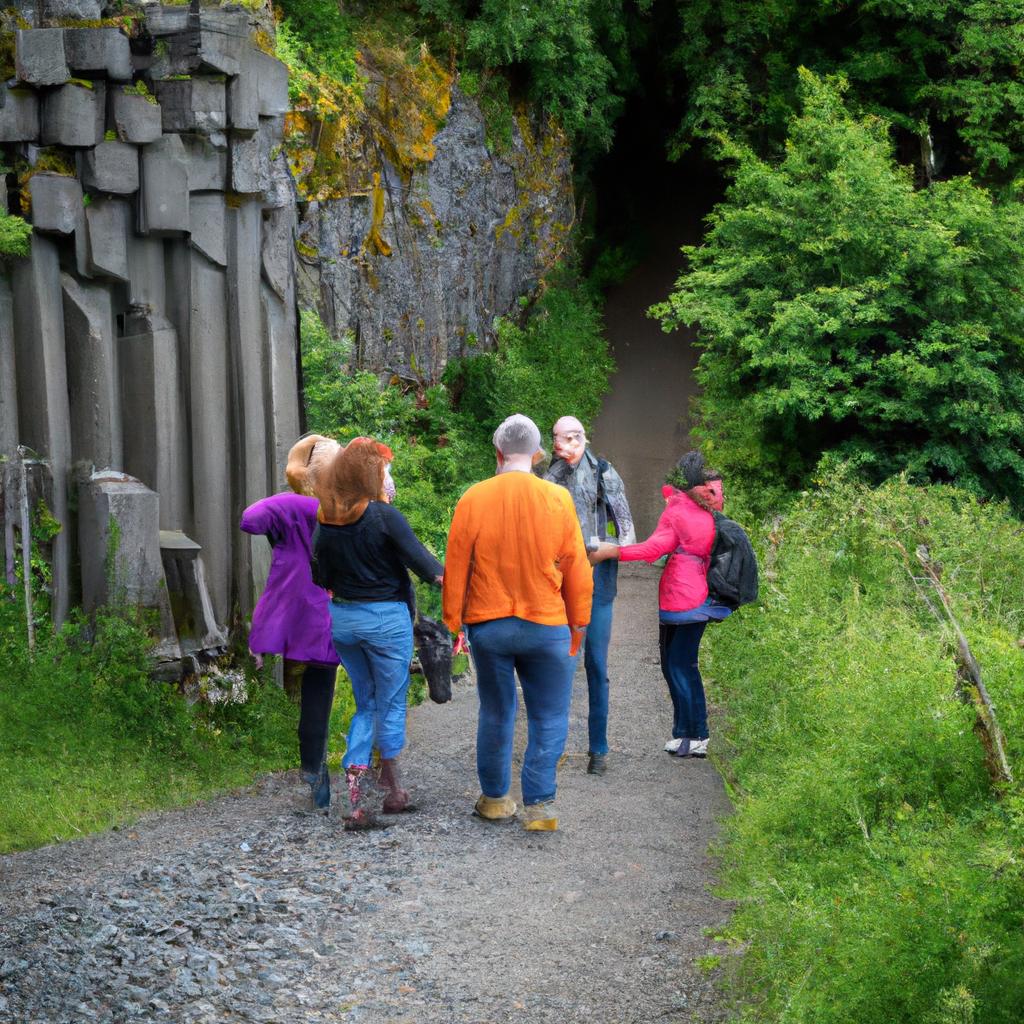
Basalt columns possess distinct physical traits that make them instantly recognizable. They typically exhibit a smooth, glossy texture and are predominantly black or dark grey in color. These columns are primarily hexagonal in shape, although variations such as pentagonal or rectangular forms can also be found. The uniformity in size and shape lends them a symmetrical and visually pleasing appearance.
Due to their color and texture, basalt columns have gained popularity as a choice material for home décor and landscaping. They can be utilized in various ways, such as fountains, garden walls, and stepping stones, adding a touch of natural beauty to any landscape design. Moreover, their durability and strength make them excellent building materials for foundations and retaining walls in construction projects.
The Locations of Basalt Columns
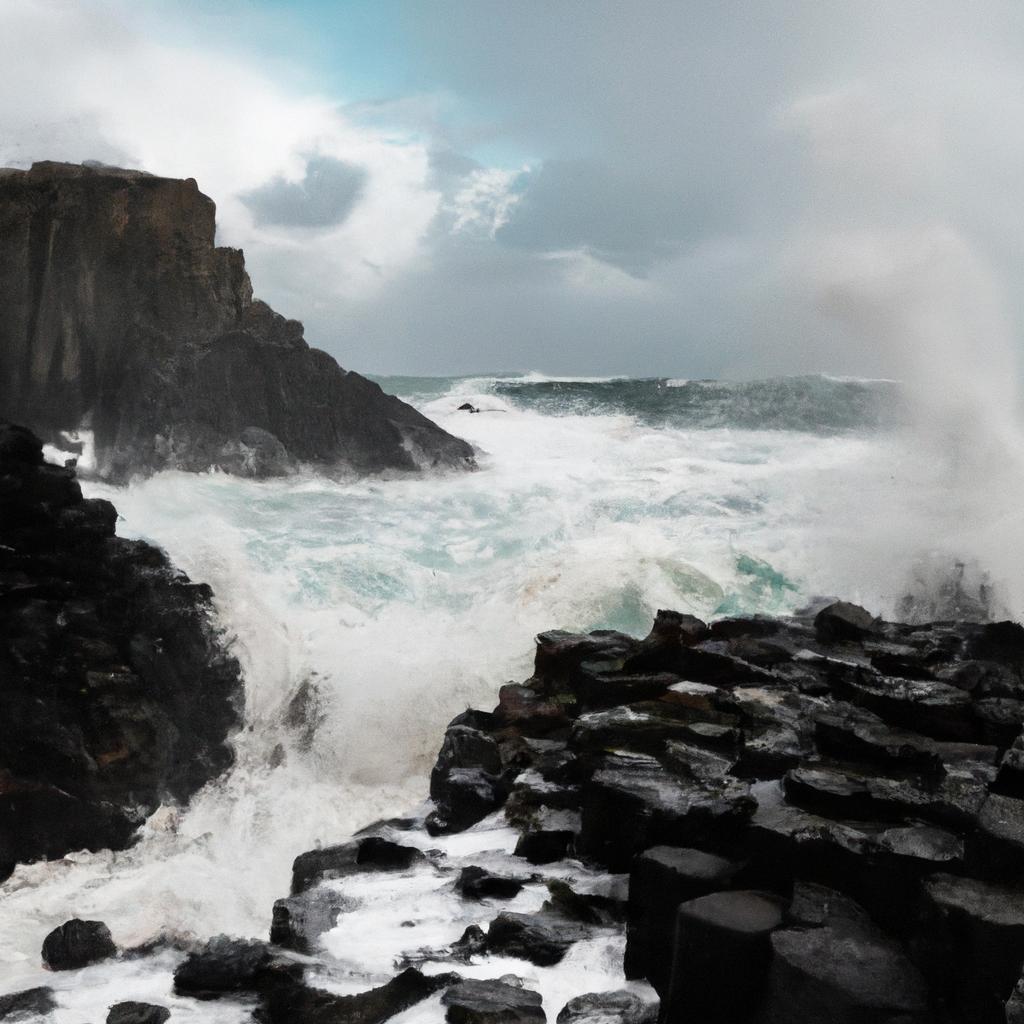
Basalt columns can be found in different parts of the world, with each location boasting its own distinct geological features. Here are some of the most notable basalt column sites:
Giant’s Causeway, Northern Ireland
The Giant’s Causeway is an iconic location, housing over 40,000 hexagonal basalt columns. These columns were formed through volcanic activity over 60 million years ago. Today, the site is a popular tourist attraction in Northern Ireland, offering visitors a chance to explore the columns and learn about the area’s geological history.
Devil’s Tower, Wyoming, United States
Devil’s Tower stands prominently in Wyoming, reaching a height of 867 feet. Composed of hexagonal basalt columns, this tower is the result of volcanic activity over 50 million years ago. Visitors can hike around the tower and discover the tower’s cultural significance to Native American tribes.
Svartifoss Waterfall, Iceland
Svartifoss Waterfall is renowned for its picturesque basalt column formations, providing a stunning backdrop for the cascading waters. These columns were formed by volcanic activity and erosion over thousands of years. Visitors can hike to the waterfall and immerse themselves in the natural beauty of the surroundings.
Basalt columns, besides being geological marvels, have become popular tourist destinations worldwide. Visitors can explore the unique formations and geological features while discovering the cultural and historical significance of these sites.
The Uses of Basalt Columns
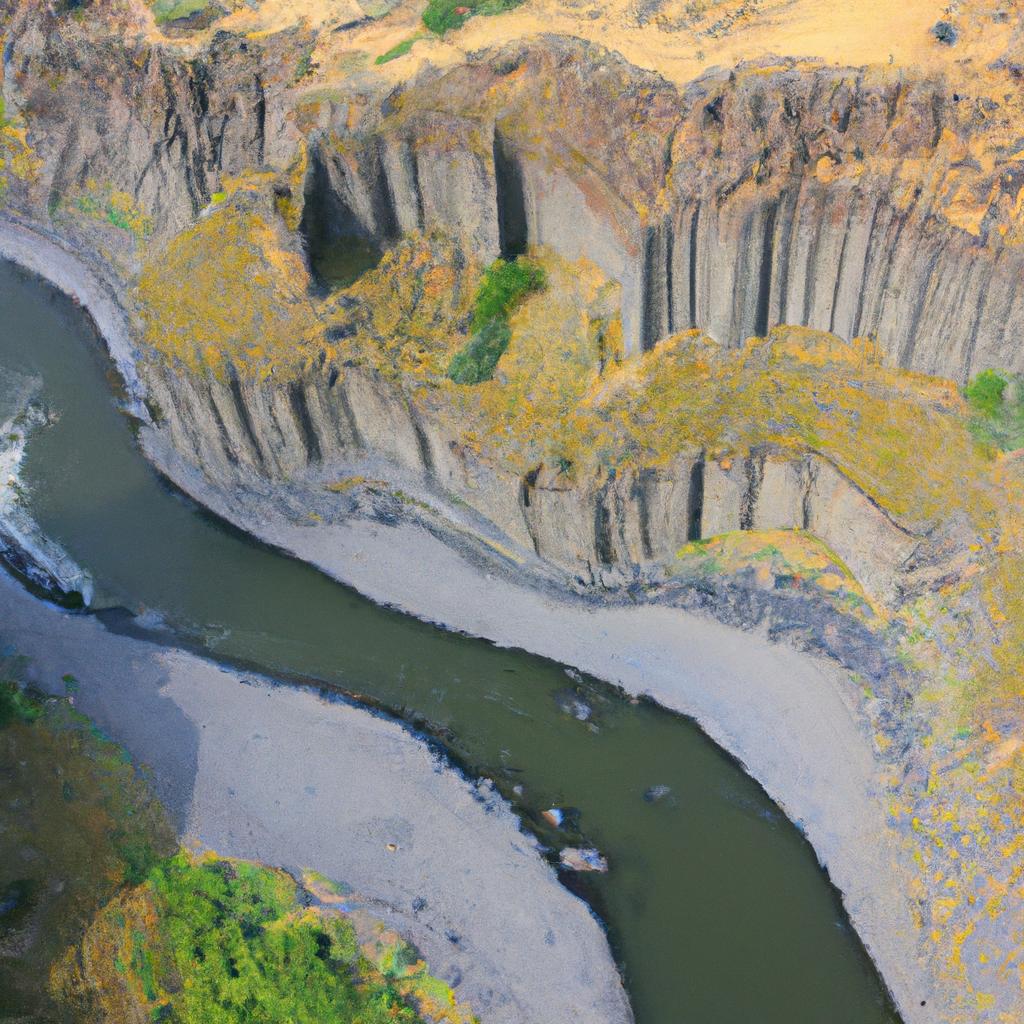
Basalt columns have been utilized for centuries due to their cultural and historical importance. In ancient times, they were employed in constructing temples, tombs, and other significant structures. In the present day, basalt columns find applications in construction and landscaping.
The durability and strength of basalt columns make them an excellent choice for building foundations and retaining walls. They are also highly sought-after in interior and garden designs, serving as captivating decorative elements. With their natural beauty and texture, basalt columns bring elegance and sophistication to any outdoor space.
Beyond their aesthetic and functional uses, basalt columns offer environmental benefits. Basalt is a natural, non-toxic material that poses no harm to the environment. Furthermore, these columns are resistant to weathering and erosion, ensuring their longevity and sustainability for construction and landscaping projects.
The Conservation and Preservation of Basalt Columns
To safeguard their beauty and ecological value, preserving basalt columns is of utmost importance. These formations face threats from human activities as well as natural phenomena. Climate change, erosion, and unregulated tourism are the primary risks to basalt columns. Climate change, in particular, can lead to temperature and precipitation pattern changes, resulting in the degradation of these natural wonders. Erosion caused by wind and water can also contribute to their deterioration over time.
Tourism can have detrimental effects on basalt columns. Uncontrolled tourism can lead to erosion, pollution, and damage to the natural environment. With the increasing popularity of basalt column sites, overcrowding becomes a significant concern, often resulting in trampling, littering, and other forms of harm.
Efforts are being made globally to protect and preserve basalt columns. The establishment of national parks and protected areas aims to regulate tourism while safeguarding the environment. Sustainable tourism practices, such as visitor limits and educational programs, can help mitigate the impact of tourism on these geological wonders.
Recognizing the importance of responsible tourism and sustainable practices is crucial to the preservation of basalt columns. By protecting these exceptional formations, we can ensure future generations can revel in their natural beauty and ecological significance.
Basalt columns stand as geological marvels that have captivated human fascination throughout the ages. By exploring their formation, characteristics, locations, uses, and preservation, we gain a deeper appreciation for the beauty and significance of these natural wonders. From their ancient cultural and historical significance to their modern applications in construction and landscaping, basalt columns have much to offer. The conservation and preservation efforts employed ensure that basalt columns can continue to flourish, enchanting generations to come. At TooLacks, we uphold the value of responsible tourism and sustainable practices, as we strive to protect the environment and preserve the natural beauty of our world. TooLacks is committed to promoting these principles to safeguard basalt columns and other wonders of nature.
